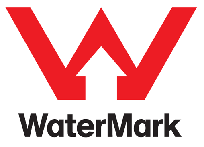For properties not serviced by the TasWater reticulated water network, you will likely need to rely on your own private primary water supply. This is most commonly in the form of rainwater storage tanks filled by the roof catchment areas on your property.
Important: Rivers, streams, and bores can also provide a primary water source but are not covered by this document.
Properties that are serviced by TasWater may collect roof rainwater for non-drinking purposes such as toilet flushing, clothes washing etc. This water supply must remain separated from the TasWater network in an approved manner compliant with the National Construction Code (NCC).
The collection, storage, and consumption of rainwater can present some risks which will be outlined below, along with strategies to manage these risks for the protection of users, and your plumbing system.
Collection of Rainwater
In Tasmania, rainwater can often provide an exceptionally clean water source, provided a few considerations are made when designing and installing the rainwater harvesting system.
- The roof catchment area and gutter system should be kept free from debris. This can be managed by a combination of measures including:
Gutter Mesh– A linear screen applied to bridge the roof area and the front of the gutter, this results in leaves, sticks and animal droppings passing over the screen and falling to the ground below rather than entering the gutter and downpipe system. The screened rainwater can enter the gutter system.
First Flush Device – These devices mostly rely on float systems that divert an initial volume of rainfall carrying contaminants to a separate drainage point and can reduce the amount of dust and dirt being washed into your rainwater tank. This can assist in preventing a build-up of sludge in your rainwater supply.
Tank Inlet Screens –Rainwater tanks should be fitted with a fine mesh screen at the inlet to keep any leaf litter, animal droppings and small mammals or birds from entering the tank. They can also prevent mosquito larvae from developing in your water supply.
- Ensure animals do not have access to your roof to avoid contamination from faeces or becoming trapped in downpipes etc.
- Remove any overhanging branches to minimise bird droppings and leaf litter falling onto the roof catchment.
- Roof areas that are likely to be subject to agricultural chemical spraying should be assessed as to whether rainwater catchment is suitable, or what additional treatment might be required.
Important: Lead products are prohibited for use on any roof and gutter catchment area used to collect rainwater for drinking water purposes. If you are unsure about your roofing materials, discuss this with your plumber.
Downpipes commonly discharge directly into rainwater tanks which is called gravity discharge. Where a gravity discharge is not suitable from your downpipes to the rainwater tank, a ‘charged’ or ‘flooded’ system can be installed by a licensed plumber in accordance with the Director’s Guidelines – Charged Downpipes to Rainwater Tanks of Class 1a and 10 Buildings for drinking water purposes (PDF, 231.6 KB). This Director’s Guideline provides a full explanation of charged downpipe systems.
Storage of Rainwater
To meet average domestic needs, the volume of stored rainwater required must be calculated in accordance with the size of your catchment area, expected rainfall, water usage habits, space available to store rainwater and any additional volume required to make it through periods where little or no rainfall occurs.
The correct storage of rainwater is vital to protecting your family from harm. A well-designed system will avoid excessive storage volumes by designing to usage patterns, expected rainfall and seasonal variability. It will also aim to have tanks positioned out of direct sunlight where possible and provide appropriate drainage points to allow for flushing of pipework to avoid stagnation during summer months. The overflow from the tanks must be discharged to an approved location.
Prior to selecting a tank, you should consider the environment the tank will be installed in and how that might guide the material selection. Always discuss with the manufacturer prior to purchase to ensure your location will be suitable for the type of tank being purchased.
Depending on individual circumstance, a sub-floor bladder, in-ground, or an above-ground tank may be selected as the most suitable option. In-ground tanks for drinking water purposes should be carefully designed to avoid contamination from groundwater or wastewater.
Any system component that comes into contact with drinking water must hold a WaterMark certification which confirms that the product has been tested in accordance with the relevant Australian Standard, that being AS/NZS 4020. Therefore, you may only use products that display the WaterMark logo (as indicated).

Rainwater tanks must be manufactured according to specific Australian Standards. When selecting a tank look for the following:
- Polyethylene tanks – AS/NZS 4766
- Metal tanks – AS 2180
- Galvanised or aluminium/zinc coated metallic tanks that are used to hold water for drinking must have an internal coating or lining compliant with AS/NZS 4020 (AQUAPLATE® is one such example)
- Concrete tanks – AS 3735
- Any new concrete tank used for drinking water should be lined with a membrane to prevent leaching of chemicals into your water supply
All rainwater tanks and supply pipework for drinking water must be clearly labelled (example below) as specified in AS/NZS 3500.1 and in accordance with AS 1345. The exception to this requirement, is where a tank is intended to supply water for drinking and personal hygiene, identification on this tank is not required under the NCC.
![]()
Commissioning, tank flushing and disinfection
Prior to use, rainwater storage tanks must be cleaned and disinfected in accordance with Appendix G of AS/NZS 3500.1:2021.
This process also applies when the tank is taken out of service for inspection, repairs, painting or any other activity that might lead to contamination of the water.
Contamination could include, but is not limited to the following occurring:
- Significant bushfires in the local area, where large amounts of ash have landed on the roof catchment area.
- Properties affected by the aerial spraying of agricultural chemicals, or fire suppressants where a bushfire has occurred.
- Detection of a deceased animal within the rainwater catchment system.
- Where water has a foul odour, taste, or is significantly discoloured.
If any of the above situations occur, it is recommended you immediately cease use of the supply until testing can confirm safety, or the system can be completely flushed and disinfected.
The Federal Government website www.health.gov.au contains further reading on the use of rainwater tanks. It provides detailed information on waterborne diseases, pathogens, and the associated health risks with consuming rainwater. It also raises considerations such as the use of fluoride for dental health, which is usually added to utility operated network supplies but obviously absent from rainwater supplies.
Rainwater usage and treatment
In Tasmania, the domestic use of rainwater for drinking and personal hygiene is considered a safe option provided measures are taken to ensure protection of the supply.
Depending on individual preference or personal health requirements, treatment methods are available to purify water for taste/odour/colour.
Sediment screening is a recommended step and can be achieved by installing a screen filter downstream of the pressure pump. Basic filtration will also remove larger particles from the water supply protecting pipework and fittings from premature failure.
Membrane filtration systems can be used for the removal of bacteria, Giardia, virus, and other micro-organisms and Ultra-Violet (UV) treatment of water is a common method for disinfecting rainwater. When installing any filtration system your plumber should consider isolation and bypass for servicing needs.
Regular chlorination of a rainwater supply can also be adopted to provide a safe drinking water supply. The Department of Health website provides the Tasmanian Drinking Water Quality Guidelines, which contains recommendations on chlorine dosing requirements.
Maintenance
Regular maintenance of your rainwater system will mitigate a lot of the less appealing issues experienced with rainwater supplies such as discolouration or unusual taste.
Frequent cleaning of your gutters and tank screens reduces the amount of organic build-up in your tank. If hosing out gutters, it is recommended that any tank inlet is diverted away from the tank, prior to flushing.
Your tank should be checked at least every three years for any build-up of sludge in the base of the tank. All tanks over a 500L capacity must be fitted with a minimum 40mm sludge valve in accordance with AS/NZS 3500.1. Excess sediment can be flushed out through this valve.
Visual checks of your rainwater tank and pipework should indicate any breach in structural integrity which is often identified by a build-up of green algal matter around joints in pipework, or staining patterns on your rainwater tank.
Regulatory Requirements
Town Planning
Rainwater tank stands are classed as 10b structures in the NCC, and your proposed system may invoke planning requirements with your local council as well as other conditions or restrictions.
There are restrictions on the volume of water that can be stored on a property within a landslip hazard area. Bushfire Hazard areas require special consideration for the types of tank materials used and your designer will be able to ensure any special requirements are covered off.
Occupational Licensing
Roof work, downpipes, stormwater drainage, and the connection of a rainwater tank to a water supply is the work of a licensed plumber. It is an offence under the Building Act 2016 to carry out any prescribed plumbing work without an appropriate plumbing licence.
As an owner, you must ensure that any prescribed plumbing work carried out on your property has been undertaken by a licensed plumber.
Categories of Work and Notification
Prescribed work carried out on a rainwater harvesting system must be undertaken in accordance with the Director’s Determination – Categories of Plumbing Work (PDF, 954.2 KB). You are required to ensure that any new, or rectification works on your property are undertaken with the correct approvals in place. If you are unclear on these requirements, you should contact your local council’s permit authority prior to commencing any works to be sure that you are not in breach of the Building Act 2016 by failing to obtain the relevant approvals.
Commercial Usage
If you are operating an accommodation business (bed and breakfast, short-stay, farm stays, camping ground, caravan park, hotel, or motel etc.) using a source of drinking water not provided directly by TasWater, you need to consider registering with the local council as a Private Water Supplier. This may include demonstrating that the water provided for drinking meets the minimum standards for water quality as defined in the Australian Drinking Water Guidelines (ADWG) and the Tasmanian Drinking Water Quality Guidelines 2015. Failure to provide a safe drinking water supply could have serious consequences for you, your customers, and your business. It is important to discuss your specific situation with your local council so that you understand your legal responsibilities.
Further Reading:
- Private Water Suppliers - https://www.health.tas.gov.au/private-water-suppliers
- Tasmanian Drinking Water Quality Guidelines - https://www.health.tas.gov.au/publications/tasmanian-drinking-water-quality-guidelines
This page has been produced and published by the Consumer Building and Occupational Services Division of the Department of Justice. Although every care has been taken in production, no responsibility is accepted for the accuracy, completeness, or relevance to the user's purpose of the information. Those using it for whatever purpose are advised to verify it with the relevant government department, local government body or other source and to obtain any appropriate professional advice. The Crown, its officers, employees and agents do not accept liability however arising, including liability for negligence, for any loss resulting from the use of or reliance upon the information and/or reliance on its availability at any time.
